 advertisements advertisements
|

|
SpaceX Falcon 9 rocket debuts on display at Space Center Houston
March 12, 2020 — You can now get up close, around and even under the first-ever commercial rocket to launch on two missions for NASA.
Space Center Houston, the visitor center for NASA's Johnson Space Center in Texas, is welcoming the public to see its newest exhibit — a "flight proven" SpaceX Falcon 9 booster. The rocket's first stage, still displaying the scorch and soot marks from its two launches, has been elevated off the ground and exhibited horizontally, affording a first-of-its-type view of a commercial spaceflight artifact.
"Our SpaceX rocket exhibit will inspire people of all ages to pursue science learning and discovery," William Harris, president and CEO of Space Center Houston, said in a statement. "We want everyone to have access to learn about the growing commercial space sector which is stimulating the economy and drawing more companies to provide innovative technologies, medical advances and further NASA's plans to send humans to the moon and Mars."
The outdoor exhibit is set to open to the public at 11 a.m. EST (1500 GMT) on Thursday (March 12), following a ribbon cutting with Space Center Houston and SpaceX officials.
Delivered to Space Center Houston from its Cape Canaveral, Florida launch site on March 4, the rocket was configured and positioned for display by some of the same SpaceX engineers whose work it is to service the recovered Falcon 9 first stages between launches.
"They were so excited to be part of this," Paul Spana, Space Center Houston's exhibits manager, said in an interview with collectSPACE. "Because they see it as being historic."
"SpaceX refers to it as a 'monument.' I've never used that word, but that is the only word they use," Spana said.
One of only two such "monuments" currently in existence — the first was erected vertically outside of SpaceX's headquarters in Hawthorne, California in 2016 — the Space Center Houston Falcon 9 exhibit is the first to invite the public to walk under the 156-foot-long (47.7-meter) rocket. A concrete walkway was designed to cross under the booster in the shape of the stylized "X" in SpaceX's logo.
Three Y-shaped cradles support the rocket 14 feet (4 m) above the ground.
The Falcon 9 first stage, referred to by SpaceX by its production number, B1035, first lifted off on June 3, 2017, lofting SpaceX's 11th NASA-contracted resupply run to the International Space Station on what was the 100th launch from the space agency's historic Complex 39A at Kennedy Space Center in Florida. The flight also marked the first reuse of a SpaceX Dragon cargo spacecraft.
The stage then returned for a propulsive touchdown on SpaceX's Landing Zone-1 (LZ-1) at the nearby Cape Canaveral Air Force Station.
Six months later on Dec. 15, 2017, the first stage was launched again, this time with the space station-bound CRS-13 Dragon capsule. It then landed for a second and last time on LZ-1.
SpaceX subsequently made improvements to the Falcon 9 design, leading to the B1035 stage being retired and available for donation to Space Center Houston. The booster remained intact though, almost to the point that it could be serviced and flown again.
"One of the technicians told me, 'What you got here is a fully functional rocket.' He said this is the real thing and everything is here," said Spana.
The Falcon's four landing legs are missing their actuators and one was flown on a different vehicle than B1035, but the four aluminum grid fins and nine Merlin 1D engines are intact as they were used in flight.
"SpaceX took a lot of steps for preservation," said Spana. "If you look close, you will see fresh silicone here and there and that is to weatherproof it."
Guests visiting Space Center Houston will first see the Falcon 9 display as they enter into the parking lot. They will then access the exhibit by entering the main building (with admission) and then walking out through Independence Plaza, which showcases NASA's original Boeing 747 Shuttle Carrier Aircraft and mock space shuttle orbiter.
Eventually, Space Center Houston plans to erect a new building near the Falcon 9 exhibit to display other commercial spaceflight artifacts.
"I am excited that Space Center Houston has grown to the point where we have exciting things like this coming," said Spana. "I'm really proud that SpaceX worked with us as the first location for a Falcon 9 museum display." |
|
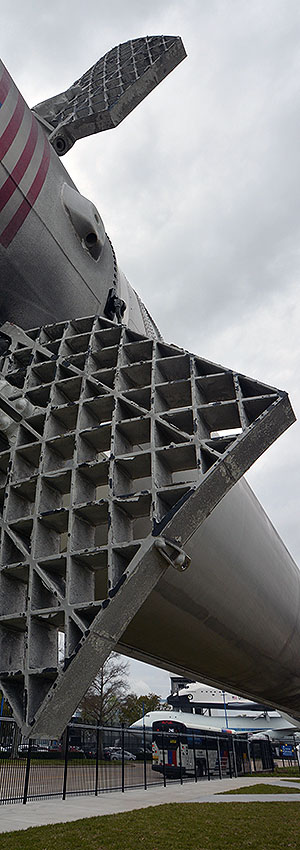
A SpaceX Falcon 9 rocket stage displays the wear and tear of having been launched twice in its newly-opened outdoor exhibit at Space Center Houston in Texas. (collectSPACE)
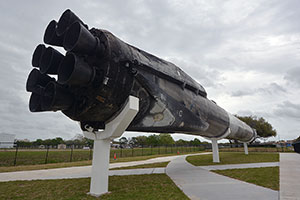
Space Center Houston is the first museum to exhibit a flight-proven SpaceX Falcon 9 rocket stage. Visitors can walk under the booster, which is mounted 14 feet above the ground. (collectSPACE) |
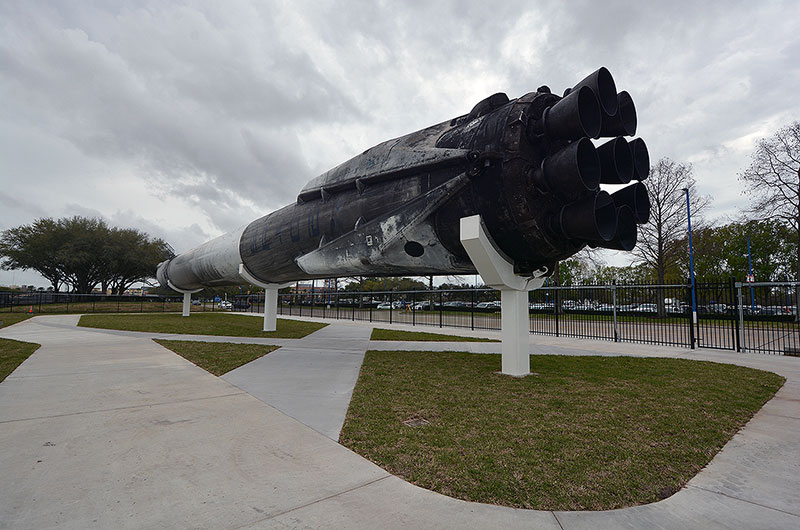
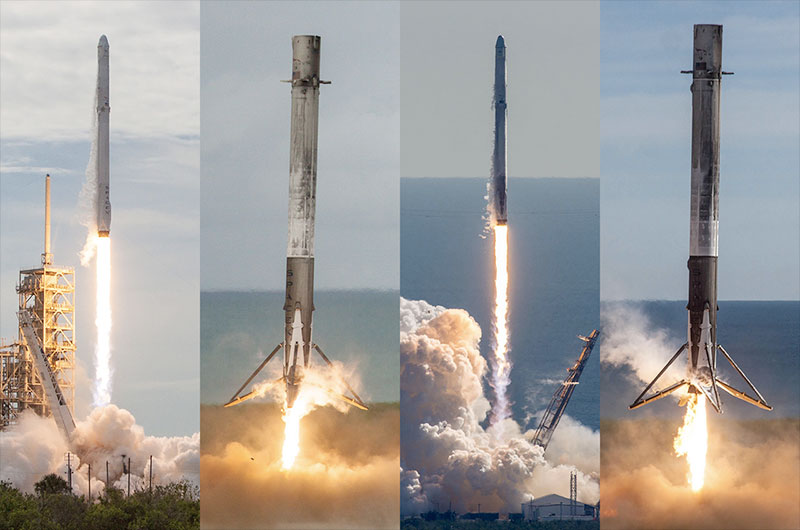
The SpaceX Falcon 9 rocket stage now displayed at Space Center Houston launched and landed twice: on the CRS-11 Dragon flight in June 2017 and CRS-13 on in December 2017, both of which delivered supplies to the International Space Station for NASA. (SpaceX) |
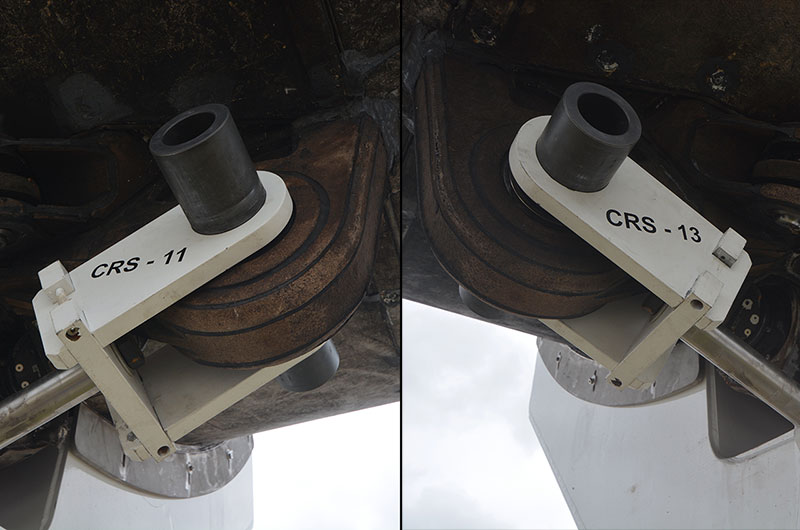
The rear display mount for Space Center Houston's SpaceX Falcon 9 rocket stage displays the NASA Commercial Resupply Services (CRS) missions, CRS-11 and CRS-13, for which the booster was used in 2017. (collectSPACE) |
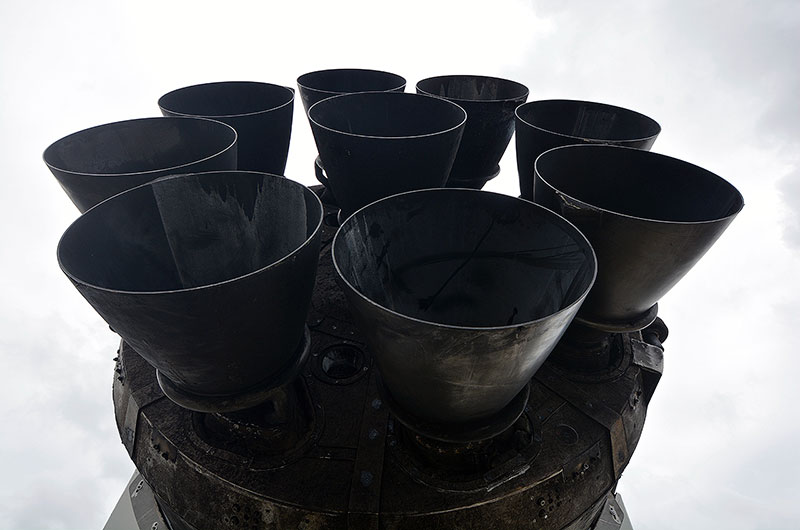
The nine aft-mounted SpaceX Merlin 1D rocket engines on the Falcon 9 first stage are preserved intact, as they were flown in 2017. (collectSPACE) |
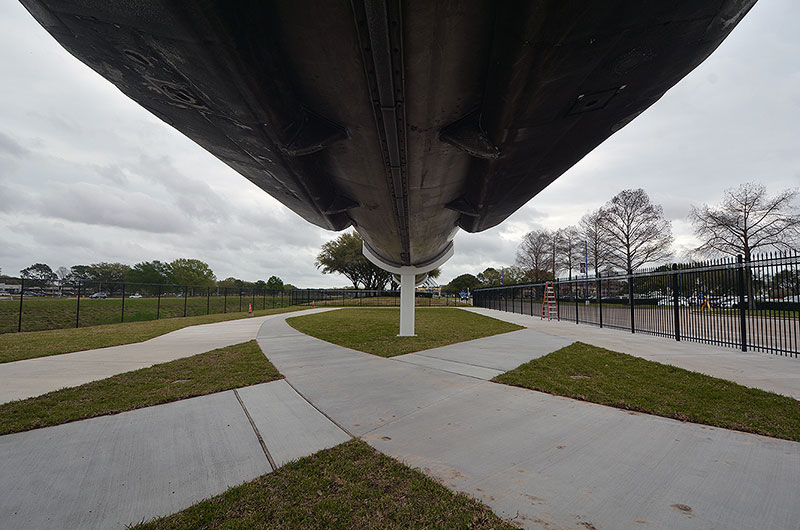
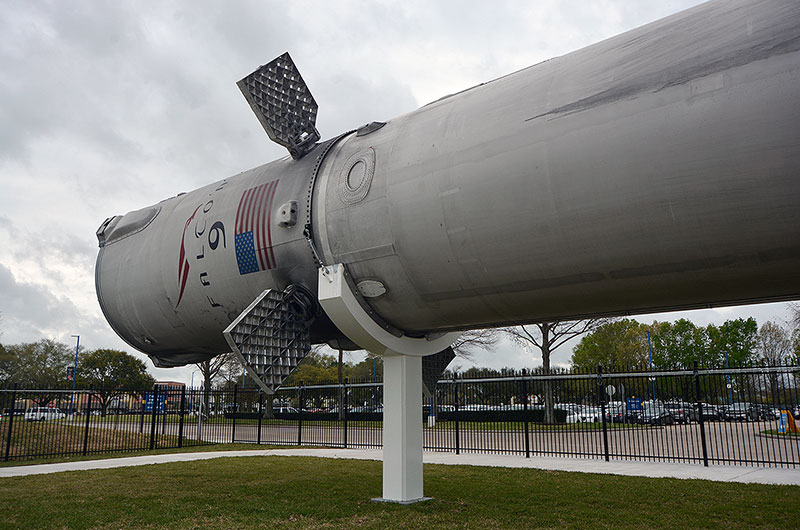
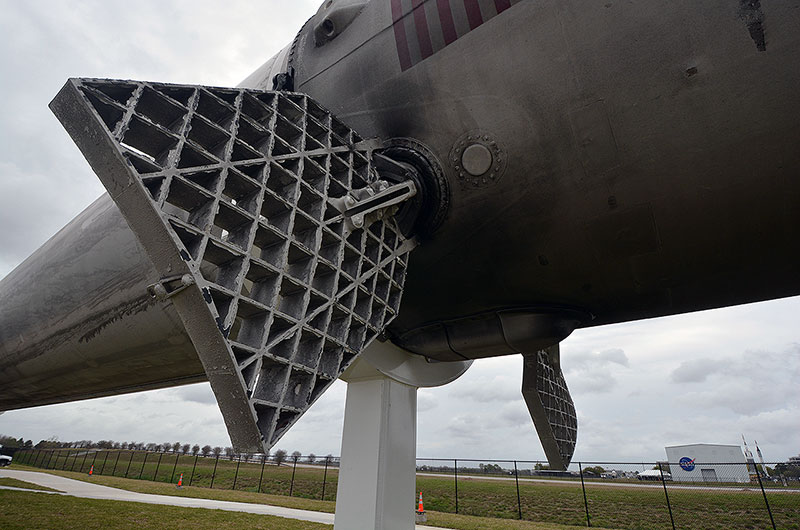
Johnson Space Center's Rocket Park, including the building housing one of the three remaining Saturn V rockets, can be seen across the street from Space Center Houston's display of the SpaceX Falcon 9 rocket stage. (collectSPACE) |
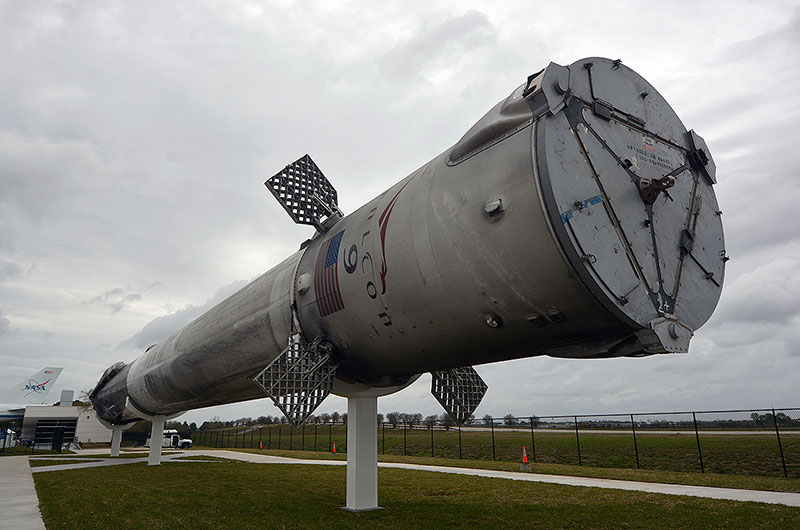
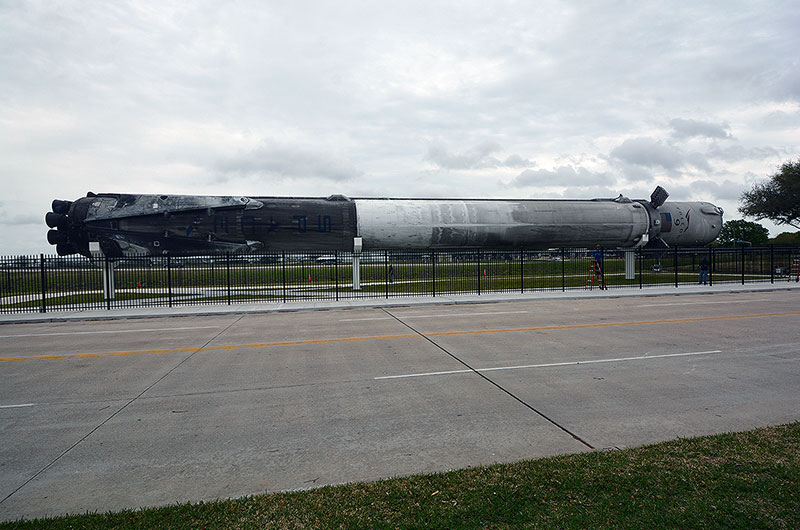
|

© collectSPACE. All rights reserved.
|
|

|

|
